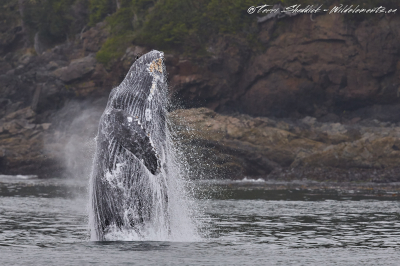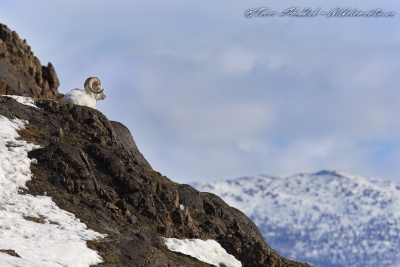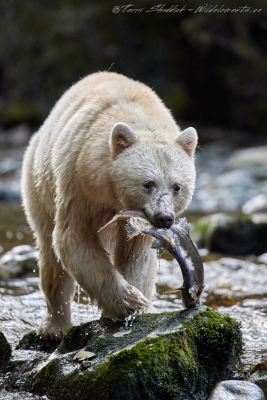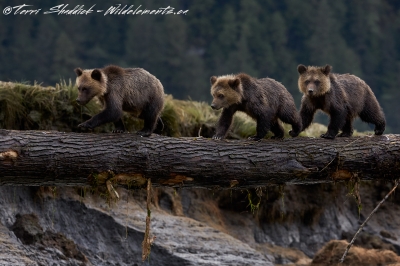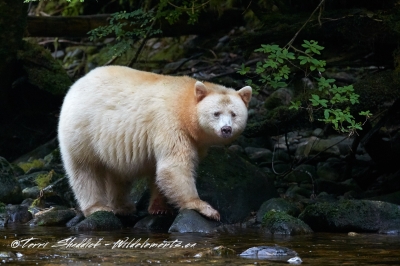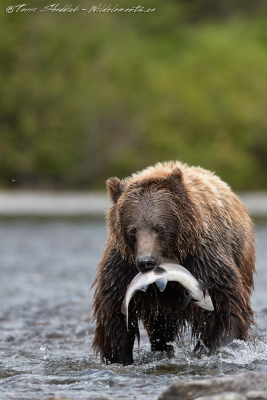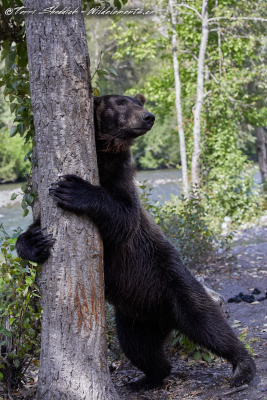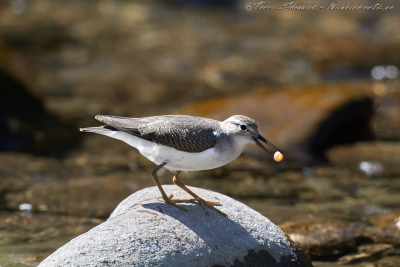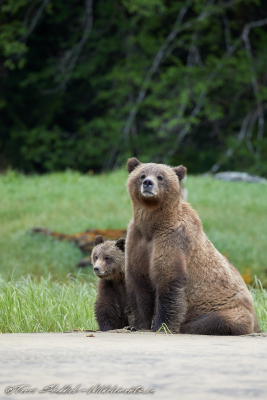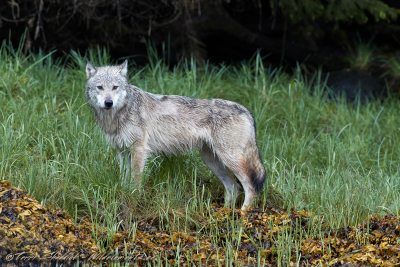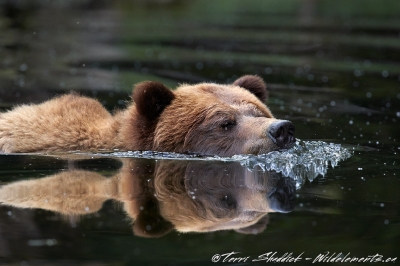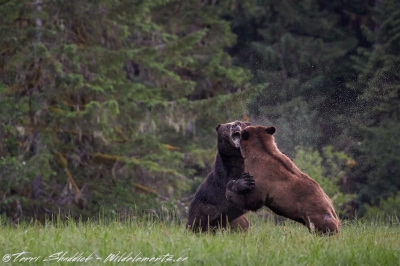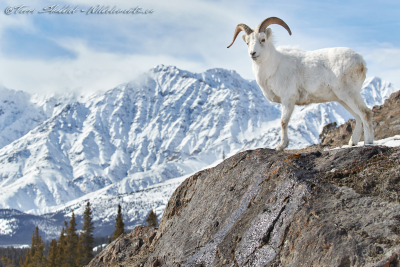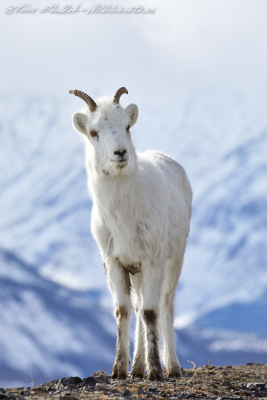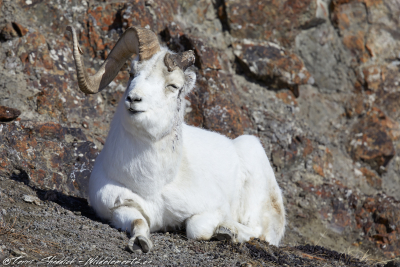I’m a little late with this blog post, but I had a wonderful time during my winter trip to Yellowstone National Park. The last few years I have taken the Christmas Break and gone down to Yellowstone, and despite the fx rate, decided at the last minute that I would do the same thing for a few days this Christmas. Yellowstone in the winter is different than Yellowstone in the Spring or Summer in that only a small portion of the park is even open, from Mammoth Hot Springs through the Lamar Valley to the North East Entrance in Cooke City, and it tends to be reasonably quiet, even over Christmas break.
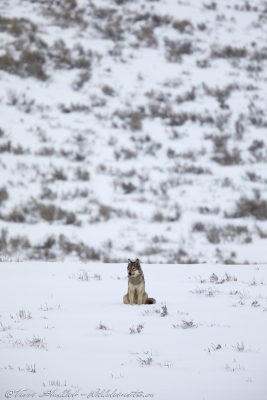
Lone Wolf
What draws me to Yellowstone is that it usually has a wide variety of wildlife to photograph from Bison, Elk, Deer, Coyotes, and if I’m lucky wolves. Besides the wildlife photography, I really enjoy snowshoeing in the powder snow that falls in Yellowstone, and exploring areas off the beaten path. I don’t usually go into a trip with any expectations, and this trip was no different, my only expectation was to get away for a few days and get a break from the office and just get out in nature and get my head cleared.
After spending time the last three winters in Yellowstone, I’m coming away this year realizing that no year has been the same, with a different highlight the last three years. Last year I was thrilled with my opportunities that I had with the wolves, however this year, had considerably less chances with them. Instead, I had an unforgettable day with River Otters, which was a first for me, and I spent pretty much the entire day just photographing the River Otters. I walked away with some excellent images from the experience (if only there was better light), and I really enjoyed the opportunity to watch up to five of them coming out of the water and “playing” around in the snow. I was also really lucky in that I saw several of them with trout, so not only did I get to see them, photograph them, but also got them with a meal, which is really quite the opportunity.
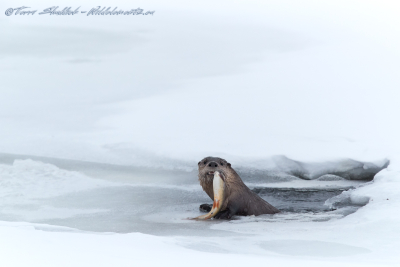
Fishing Hole
River Otters are known to be a playful species, and I wasn’t disappointed. They came out of the water a number of times and would roll around in the snow, crawl over one another, and even “dance” around before jumping back in the water and taking off. They also seemed quite curious and looked right at the photographers that were enthralled with them, and the River Otters seemed like they were showing off for us a bit. One word of advice if you are looking for River Otters, if you see something duck their head in the water and assume it was just a duck or dipper, have a second look and make sure that it isn’t actually a River Otter.
I was surprised, however, that I came away with very few shots of the “staple” species such as Bison, Elk, and Pronghorn, especially compared to previous years.
Last year in Yellowstone I had some unforgettable Wolf encounters, seeing wolves everyday of the over one week trip, and getting the opportunity to watch as two wolves tried to take down a large male elk, or as members of the wolf pack fed and slept next to a carcass. I also had the chance to hear them howling around me while snowshoeing, which if you have ever experienced it you know how mesmerizing it is. But this year I had a few far off wolf sightings, however the photographs did not compare to what I had the year before. But the highlight of getting to see River Otters made the lack of wolf photos worth it.
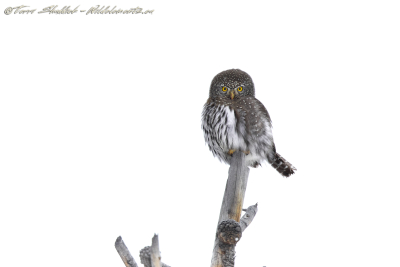
Pygmy on Point
This year I also saw a few Northern Pygmy Owls which was another photography first for me. The only unfortunate part (from a photographers perspective) is that they were always perched on the very top, or close to it, of very tall trees, I still walked away with my best shots of Northern Pygmy Owls, and now that I know what to look for I’m optimistic that I will see more, and get even better shots in the future.
So while the trip wasn’t like it was last year, or even the year before, I wouldn’t hesitate to visit Yellowstone again next winter if I have the time.
Stay tuned to my Recent Photos for images posted as I edit them, and if you would like to learn more about my recent trip to Yellowstone, feel free to email me [email protected].
